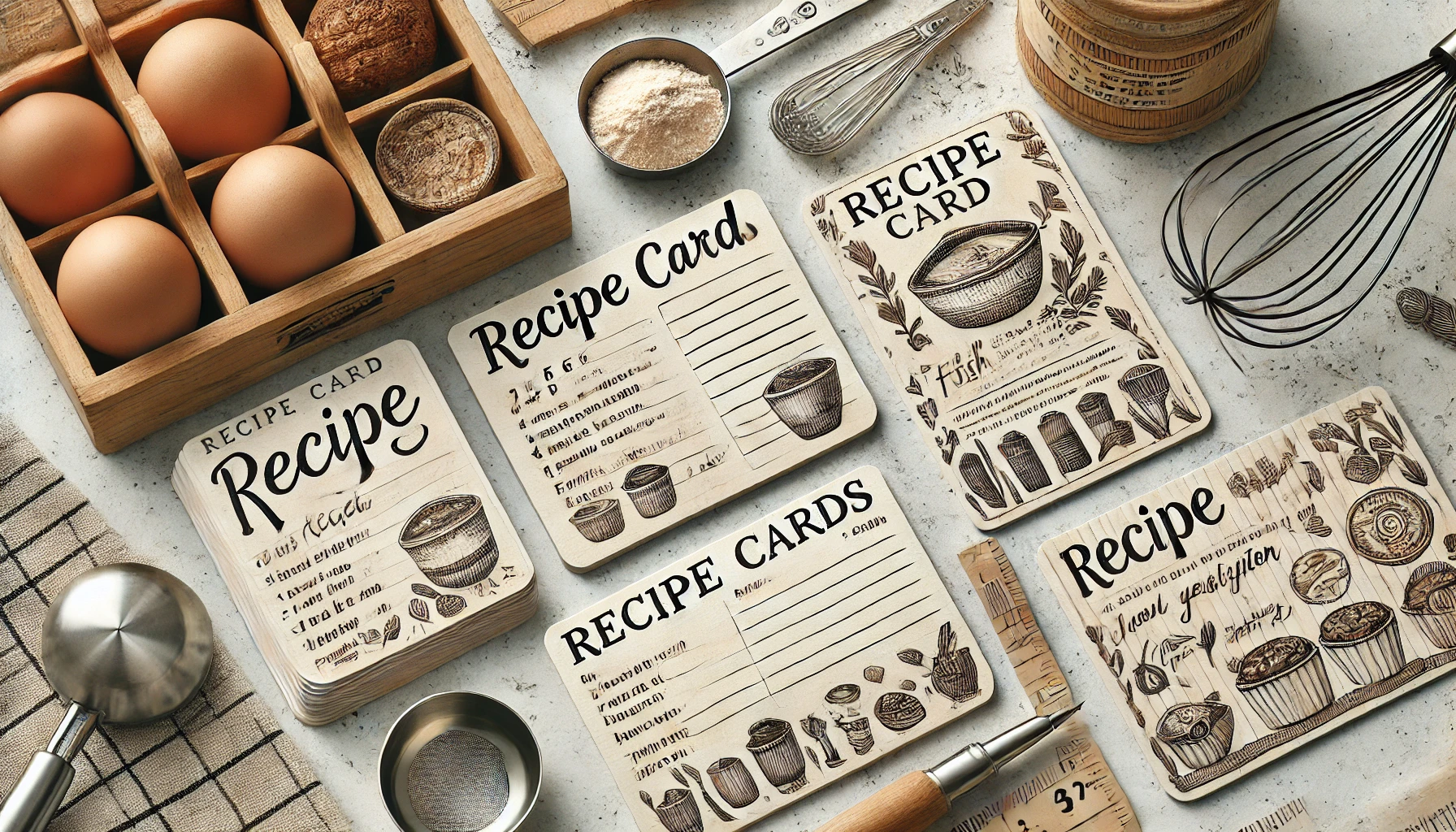Table of contents
- What is the Best Size for Recipe Cards?
- Understanding Standard Recipe Card Sizes
- 5×7 Recipe Cards: For Detailed Recipes
- Factors to Consider When Choosing Recipe Card Sizes
- Custom Recipe Cards: Going Beyond Standard Sizes
- Common Mistakes in Choosing Recipe Card Sizes
- FAQs About Recipe Card Sizes
- Conclusion:
What is the Best Size for Recipe Cards?
Selecting the right recipe card size is crucial for creating a well-organized, user-friendly kitchen. Whether you’re an avid home cook or preparing to hand down family recipes, choosing the right dimensions can influence how easy the cards are to use, store, and display. With a variety of recipe card sizes available, each suited for different purposes, this guide will help you determine the best option for your needs and preferences.
Understanding Standard Recipe Card Sizes
The most common sizes for recipe cards range from small to large, depending on the amount of space needed for writing and storage. These sizes include:
- 3×5 inches: A compact option that works well for simple recipes with minimal ingredients.
- 4×6 inches: The most popular and versatile size, providing ample space for most recipes while remaining easy to store.
- 5×7 inches: The largest common size, ideal for more complex recipes that require detailed instructions and long ingredient lists.
3×5 Recipe Cards: Small and Simple
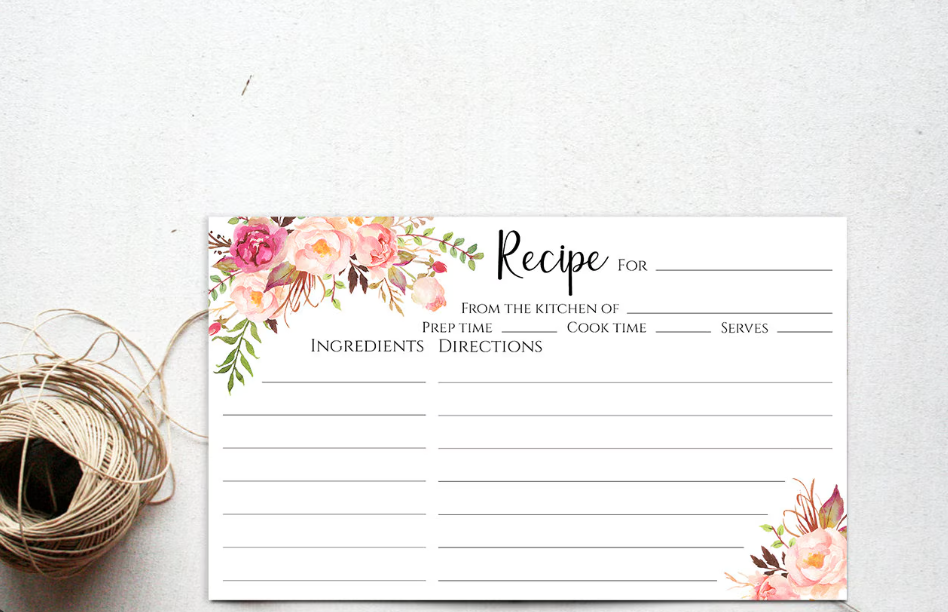
The 3×5 inch recipe card is the smallest standard size, often favored by cooks who prefer concise, minimalistic recipe descriptions. If you’re someone who likes to jot down a few ingredients and basic instructions, this size may be suitable for you. It’s perfect for:
- Basic recipes with few steps or ingredients.
- Compact storage in small recipe boxes or even photo albums.
- Handwritten recipes that don’t require a lot of space.
Despite the ease of storage, 3×5 cards may feel cramped if your recipe involves multiple steps, sub-recipes (such as sauces), or detailed cooking instructions. For many, the small size limits the amount of useful information you can fit on a single card, and you may need to flip between multiple cards during cooking.
4×6 Recipe Cards: The Most Popular Choice
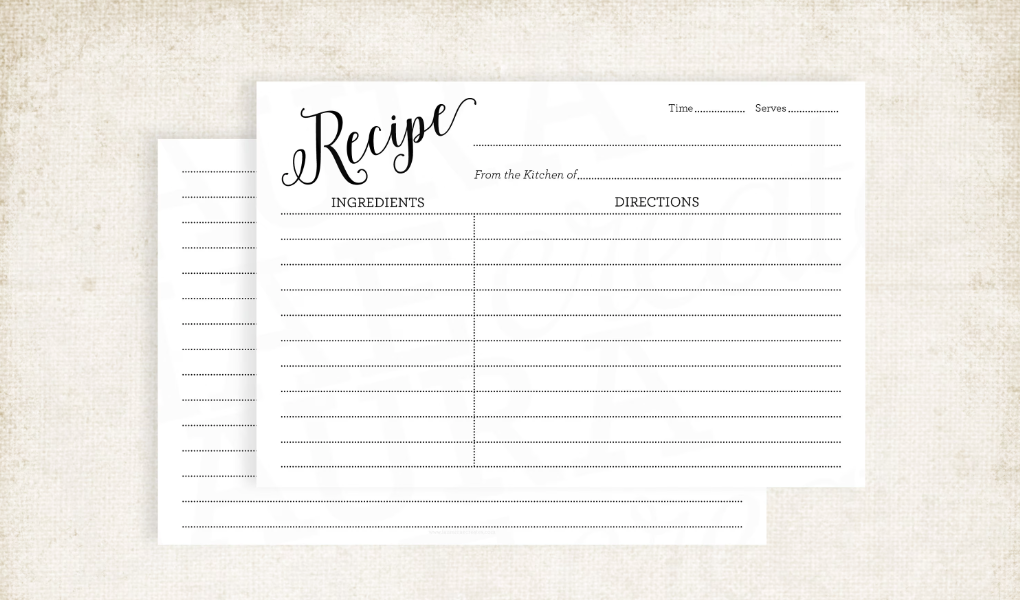
The 4×6 inch recipe card strikes a balance between space and convenience. This is the most common size used by home cooks and professional recipe card companies because it provides enough room to:
- List ingredients and cooking instructions without cramming.
- Use both front and back for additional notes, substitutions, or serving suggestions.
- Store easily in standard recipe boxes or recipe binders available at most kitchen stores.
This size is ideal for a wide variety of recipes, from everyday dishes to more detailed instructions like those for baked goods. The 4×6 recipe card allows for a structured and easy-to-read format, helping cooks follow the recipe without distraction.
For those who want a bit more flexibility in their storage, 4×6 cards also fit nicely into photo albums, which can serve as an organized and creative way to display family recipes. Plus, they’re commonly used in recipe card holders, which allow you to prop the card upright while cooking for easy viewing.
5×7 Recipe Cards: For Detailed Recipes
If you’re working with intricate recipes that require lots of detail, the 5×7 inch recipe card might be your best option. This size is perfect for recipes that need:
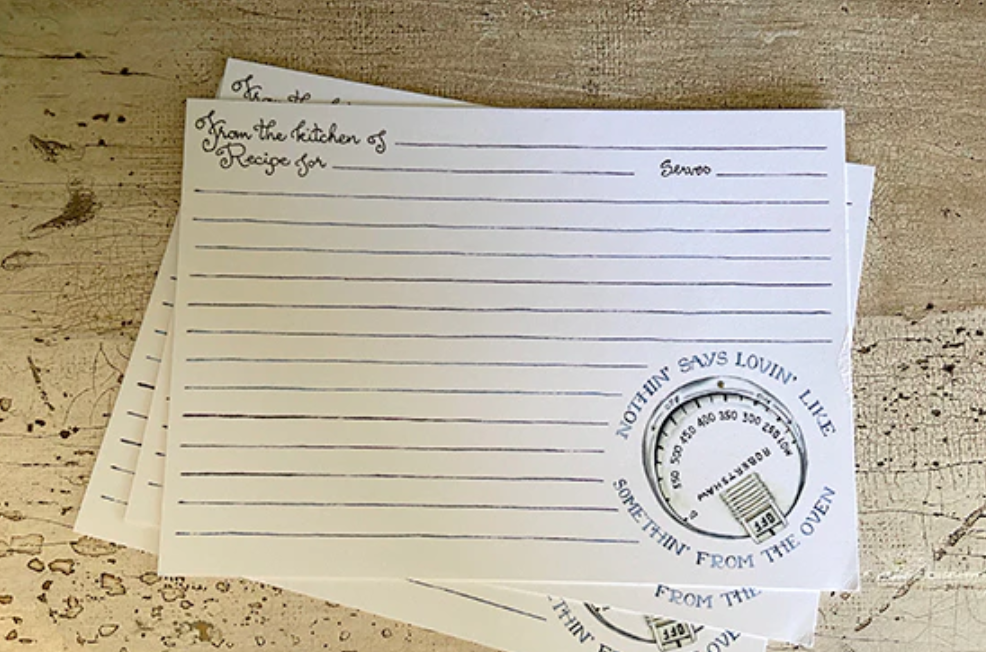
- More space for complex steps and elaborate ingredient lists.
- Larger handwriting for readability, especially for those who prefer not to squint at smaller text.
- Aesthetic displays, such as when you’re sharing recipes at gatherings or including them in a gift.
While 5×7 recipe cards offer plenty of room for information, they also require more storage space. They may not fit in a standard recipe box, so you’ll need to find a suitable alternative like large binders or custom-made boxes.
Pro Tip: When choosing between 3×5, 4×6, and 5×7 inch recipe cards, consider the complexity of your recipes. Simple meals can be jotted down on smaller cards, while complex dishes benefit from the larger formats.
Factors to Consider When Choosing Recipe Card Sizes
When deciding on the best recipe card size, several factors should guide your choice, including storage preferences, the amount of information you plan to include, and the aesthetic you want for your recipe collection.
1. Storage Space and Compatibility
The size of your recipe cards determines how you’ll store them. While 3×5 cards offer compact storage, they may require flipping between cards if the recipe is long. On the other hand, 4×6 and 5×7 cards provide more room for writing but may need larger storage solutions.
- Recipe Boxes: Most standard recipe boxes are designed for 4×6 cards, which makes this size a convenient and versatile choice.
- Binders: If you prefer to store recipes in binders, 5×7 cards offer a more structured and visually appealing presentation, although binders for 4×6 cards are also available.
- Digital Storage: For cooks who favor a blend of digital and physical storage, the 4×6 size often translates well to digital recipe cards or printable formats that can be shared online.
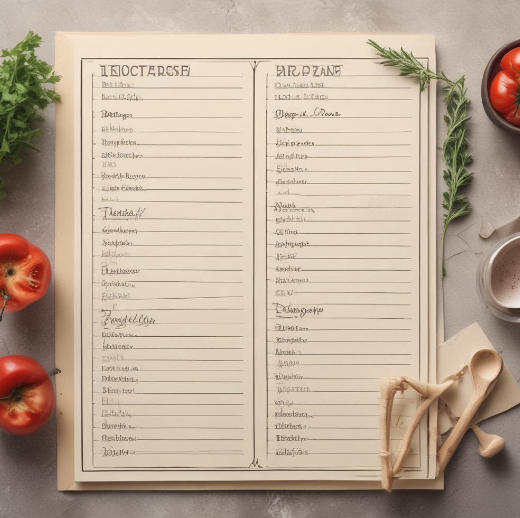
2. Amount of Recipe Information
The amount of space you’ll need on your recipe card depends on the complexity of your recipe. For simple dishes, like a basic pasta recipe, a 3×5 card may suffice. However, for more detailed dishes that require multiple steps or have sub-recipes (such as sauces or toppings), you’ll need a 4×6 or 5×7 card to fit everything neatly.
Here’s a breakdown of which sizes are ideal based on the complexity of your recipes:
- Basic recipes: 3×5 inch cards are perfect for recipes with just a few ingredients and minimal instructions.
- Standard recipes: 4×6 inch cards work well for everyday meals and baked goods.
- Complex recipes: 5×7 inch cards are ideal for recipes with multiple steps, sub-recipes, or additional instructions like variations and serving suggestions.
3. Readability and Visibility
The readability of your recipe card matters when you’re in the heat of cooking. Smaller recipe cards, such as 3×5, may be harder to read if they’re packed with too much information. For those who like larger, clear text, 5×7 cards provide more space for larger handwriting or printing.
If you’re looking for more options on how to display your cards, you can learn more from this detailed recipe card organization guide.
When to Use Each Recipe Card Size
Now that we’ve explored the different standard recipe card sizes and their use cases, it’s important to know when each size is most appropriate for your needs.
- For quick, short recipes: Use 3×5 cards. These are best suited for straightforward dishes like simple salads or dressings that don’t require much explanation.
- For everyday meals: 4×6 cards are your go-to for most recipes, offering just enough space for everything without being oversized.
- For festive or special recipes: When preparing complex dishes for special occasions, 5×7 cards will ensure you have enough space for all the necessary details.
Custom Recipe Cards: Going Beyond Standard Sizes
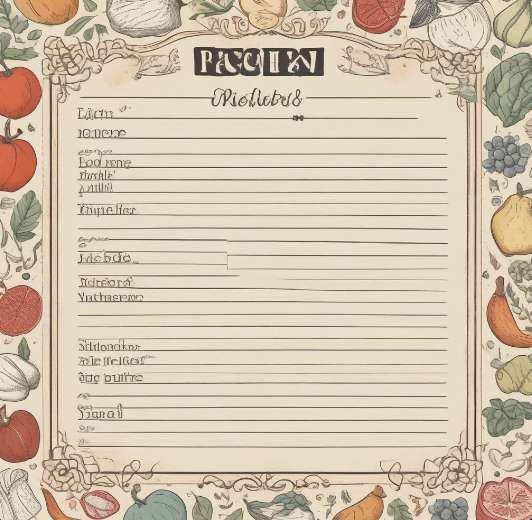
While standard sizes like 3×5, 4×6, and 5×7 work for most people, some cooks prefer custom recipe card sizes. These can be tailored to your specific needs, such as if you want extra space for notes or to accommodate specific storage options.
You can create your own custom-sized cards using digital templates available online, which allows you to design cards in any size and style you like. Some may even prefer using index cards or printable PDF templates, giving you full control over the card’s design, color, and format.
Common Mistakes in Choosing Recipe Card Sizes
While choosing the right size might seem straightforward, many people make common mistakes, such as:
- Underestimating space: Opting for 3×5 inch cards for a recipe that requires detailed instructions can lead to cramped writing and difficulty reading the card during cooking.
- Choosing the wrong size for storage: If you already have a recipe box, make sure to measure it before purchasing new cards. Not all boxes accommodate larger 5×7 inch cards.
- Neglecting readability: If you plan to share your recipes with family or friends, consider that others may find small fonts difficult to read. In such cases, 4×6 or 5×7 cards with legible font sizes are best.
FAQs About Recipe Card Sizes
Q: What is the most common recipe card size?
A: The 4×6 inch recipe card is the most popular size because it strikes a balance between space for writing and ease of storage.
Q: How do I decide which recipe card size to use?
A: Consider the complexity of your recipe, how much space you need for ingredients and instructions, and where you plan to store your cards. 3×5 cards work for simple recipes, while 4×6 and 5×7 cards are better for more detailed dishes.
Q: Can I print my own recipe cards at home?
A: Yes! You can easily print 4×6 inch cards using most home printers. Templates are available online for all sizes, allowing you to customize your cards.
Q: Do I need special storage for 5×7 recipe cards?
A: Yes, 5×7 inch cards are larger than the standard 4×6 cards, so you may need a custom recipe box or binder to store them.
Internal Linking Opportunities for Recipe Card Content
If you’re interested in more detailed guides on kitchen organization or recipe storage solutions, check out our posts on:
- How to organize recipe cards in your kitchen for more ideas on recipe card storage.
- Best practices for creating digital recipe cards, so you can easily share your recipes online.
Conclusion:
Selecting the best recipe card size depends on your recipe’s complexity and storage needs. For simple recipes, the 3×5 inch card is a compact choice. The 4×6 inch card is the most popular, offering enough space for most recipes while fitting in standard storage boxes. If you need more room for detailed instructions, the 5×7 inch card provides ample space.

